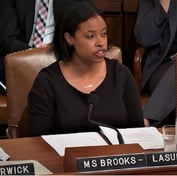What You Need to Know
- A 65-year old couple can expect to spend $300,000 on health care costs in retirement, not including long-term care.
- HSAs can provide an excellent way to save for these costs.
- Clients need your help in planning for this significant expense before reaching retirement age.
In its latest survey, Fidelity Investments pegged the cost of health care in retirement at $300,000 for a hypothetical couple aged 65. It estimates the cost for a single woman at $157,000 and for a man at $143,000. The $300,000 represents an 88% increase from Fidelity’s first survey in 2002 and an increase of 30% over the past 10 years.
Health care costs include things like medical care and prescription drugs. They can also include long-term care needs, which are not part of the Fidelity number.
Health care costs are one of the largest expenses your clients will face in retirement. Helping your clients manage these costs is an important part of the retirement planning that you do for them.
Before Retirement: Use HSAs
If your clients have access to a health savings account (HSA) while working, this can be an excellent way to build tax-free savings for retirement health care costs. HSAs are available with high-deductible health insurance plans. The beauty of HSAs as a retirement savings vehicle is that the money contributed can be carried over from year to year if not used to reimburse current medical expenses. Contributions are made pre-tax, providing a current-year tax benefit as well.
This money can then be used in retirement to cover Medicare premiums, deductibles and a whole range of qualified medical expenses, including items that may not be covered by Medicare. Withdrawals for qualified expenses remain tax-free. Any money not used for medical expenses can be withdrawn just like an IRA in retirement, though taxes will be due.
Many HSAs offer investment options that can help grow these additional retirement savings. Once your clients are on Medicare, no further HSA contributions are allowed.
Early Retirement: Fill the Medicare Gap
For clients retiring prior to Medicare eligibility at age 65, they will need to plan for how they will cover their health care costs in this “gap” period. In today’s world, all too often clients are forced into early retirement through downsizing at their company.
In the case of a client being downsized, some options for coverage may include:
- COBRA coverage through their former employer. While this is an expensive option, it can help ensure continued coverage either until they are Medicare eligible or until they find a better coverage option.
- Some employers might offer continued medical coverage to employees as an incentive to take a buyout offer.
- If their spouse is employed, the client can obtain coverage through their spouse’s employer.
- Coverage through their state’s health insurance marketplace.
For clients who are planning an early exit from the corporate world, be sure to include health care coverage in the planning work you do for them surrounding this life change.









 June 04, 2021 at 04:55 PM
June 04, 2021 at 04:55 PM










